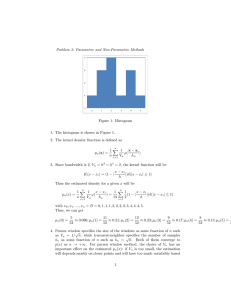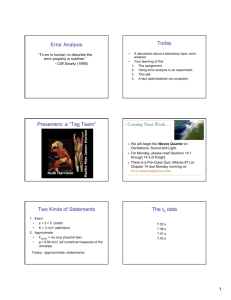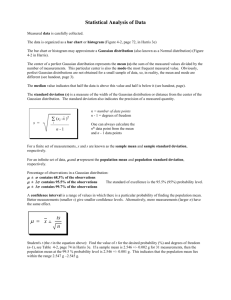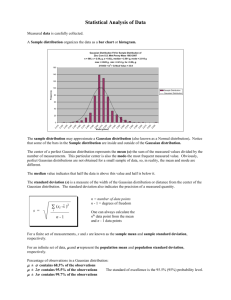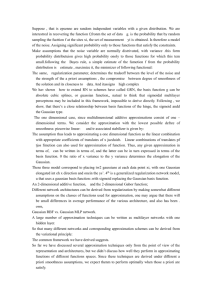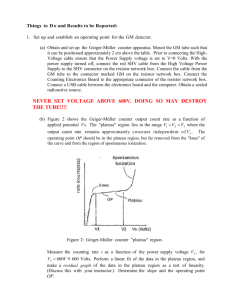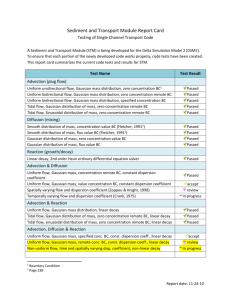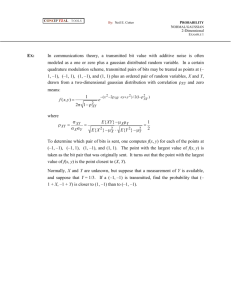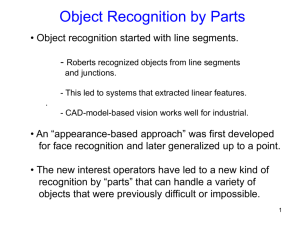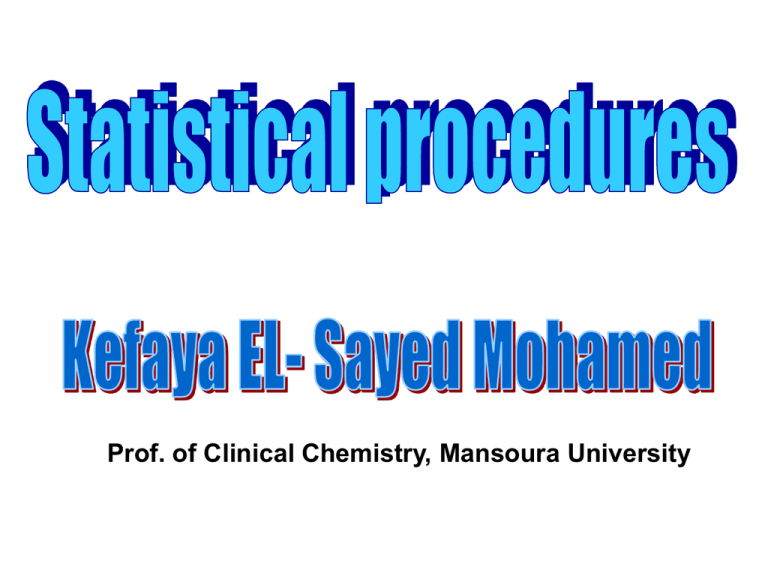
Prof. of Clinical Chemistry, Mansoura University
Statistical procedures
Statistics defined as the science of:
• Gathering data
• Analyzing data
• Interpreting data
• Presenting data
Discriptive statistics
Used to summarize the important feature of a group of data
Frequency histogram (diagram):
Repeated measurements
The number of frequency of each result on y –
axis
The value of the result on x-axis
If this histogram is bell shape (Gaussian
distribution) date analysed by standard
(parametric) statistical tests (small departure
don’t affect result).
If the data deviate greatly from Gaussian
distribution, it will be analyzed with
distribution free (non parametric) statistical
test.
Skewness:
The most common deviation from Gaussian
distribution
It is the presence of increased numbers of
observation in one of the tails of the
distribution
It is used to calculate the statistical limit
for the mean
It is the average error encountered if the
sample mean was used to estimate the
population mean .
SEM decreases as the sample size increases
The mean of large sample is likely to be
closer to the true mean than the mean of a
small sample
The introduction of a new test illustrates
the extensive use of statistics in the
laboratory.
The test should be introduced only ofter
reviewing the data that document its
usefulness in diagnosis or monitoring a
disease state.
If there are several methods to do this
test chose the optimally acurate and
precise method accuracy and precision
must be continualy assessed to ensure
reliable analyses
Descriptive statistics of groups of paired observations
This is the comparison – of – methods
experiment in which the specirmens are
measured by both the new method and
the old or comparative method.
Old method values are plotted on the xaxis .new method values are plotted on
the y-axis.
Linear regression analysis
To distinguish between to variables:
Y=mx+yo
The slop = m
Yo = y at x = O
If there is perfect agreement between the
two methods , each value measused by
the test method will be equal to that
measured by the comparative one
So y = x with m = 1 and yo = O
Calibration:
Calibration involves measurment of the
instrument response Y (absorbance) to special
samples called calibrators whose concentration
X are known.
The calibration procedure is performed
periodically to adjust for system drift.
Two kinds of errors are measured in
comparison of method experiments (random
and systemic error):
Errors account for the difference between the
test and comparative-method results.
Random error:
present in all measurements (if repeated)
due to chance
can be positive or negative
The measure of dispersion sy/x estimate
this error
Systematic error (S.E):
Influences consistently in one direction
Should not be present in a method
The slop and Y intercept can measure
systematic E
May be constant regardless of the
concentration (constant S.E)
Or proportional to analyte concentration
(proportional S.E)
Total analysis error (Xd) = Xtest – Ccomp.
(at least 40 specimen)
Comparative method = reference method e.g.
chromatography.
Scatterplot of the individual measurements XJaffe against X HPLC, with least
squares line (solid line) and line of identity (dotted line).
Inferential statistics
To compare the means and SDS of two
groups of data.
T – test: used to determine if there is statistically
significant difference between means.
F – test :
•
•
Between standard deviations.
Both have limited usefulness in method
evaluation
Sig < 0.05 = the probabilty of the difference
between the two groups of data dlue to chance is
less than 0.0
Reference entervals = Normal Range
Factors necessary :
Respect to age , sex and genetic
socioeconomic factors
Physiologic and environmental conditions
Criteria
of
excluding
or
including
individuals
Specimen collection procedure
The analytical methods
Normal value and normal range is that
corrospond to the health associated reference
interval ( central 95%)
Test performance characteristics:
Linear range:


